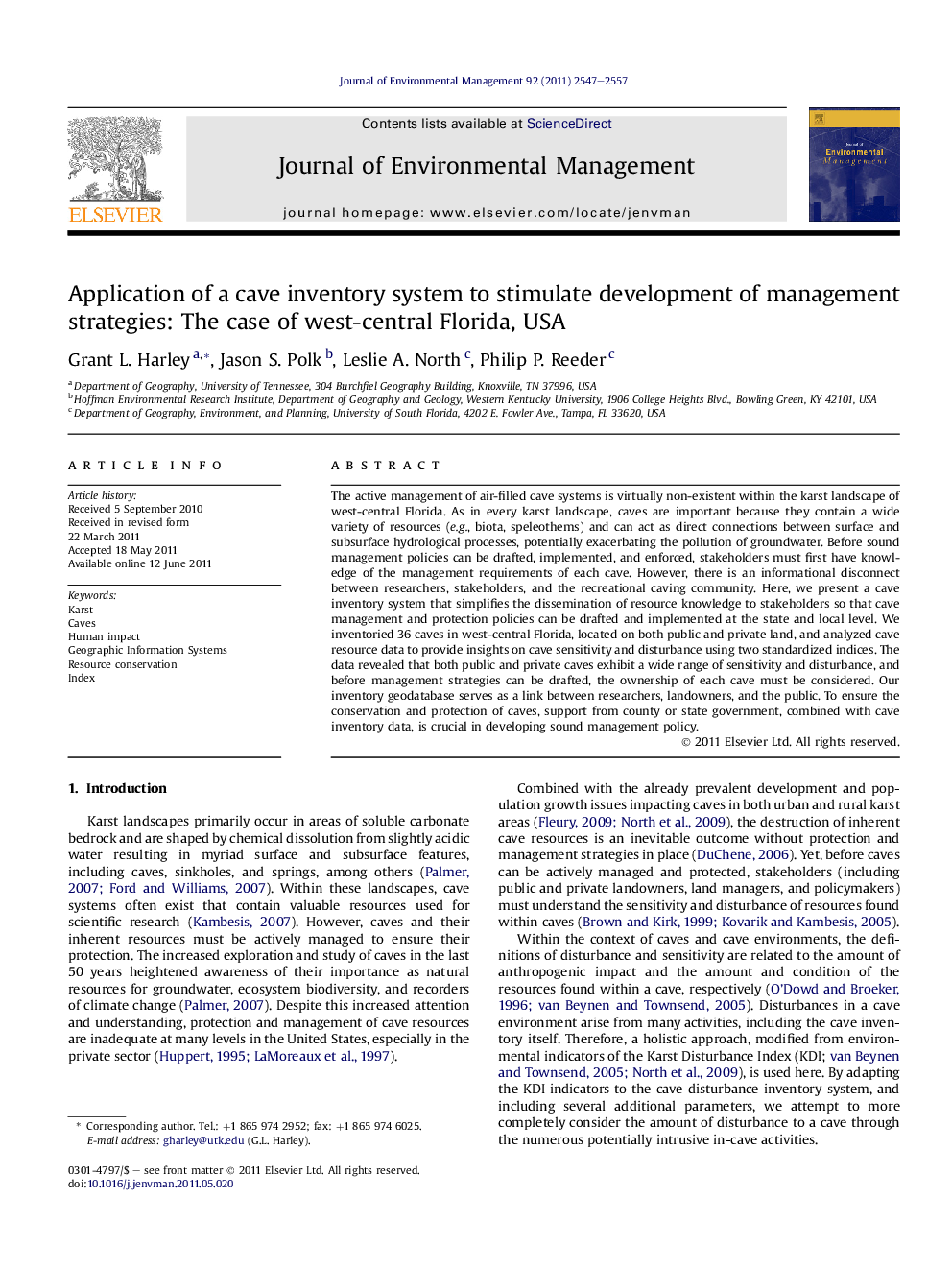| Article ID | Journal | Published Year | Pages | File Type |
|---|---|---|---|---|
| 10505431 | Journal of Environmental Management | 2011 | 11 Pages |
Abstract
The active management of air-filled cave systems is virtually non-existent within the karst landscape of west-central Florida. As in every karst landscape, caves are important because they contain a wide variety of resources (e.g., biota, speleothems) and can act as direct connections between surface and subsurface hydrological processes, potentially exacerbating the pollution of groundwater. Before sound management policies can be drafted, implemented, and enforced, stakeholders must first have knowledge of the management requirements of each cave. However, there is an informational disconnect between researchers, stakeholders, and the recreational caving community. Here, we present a cave inventory system that simplifies the dissemination of resource knowledge to stakeholders so that cave management and protection policies can be drafted and implemented at the state and local level. We inventoried 36 caves in west-central Florida, located on both public and private land, and analyzed cave resource data to provide insights on cave sensitivity and disturbance using two standardized indices. The data revealed that both public and private caves exhibit a wide range of sensitivity and disturbance, and before management strategies can be drafted, the ownership of each cave must be considered. Our inventory geodatabase serves as a link between researchers, landowners, and the public. To ensure the conservation and protection of caves, support from county or state government, combined with cave inventory data, is crucial in developing sound management policy.
Related Topics
Physical Sciences and Engineering
Energy
Renewable Energy, Sustainability and the Environment
Authors
Grant L. Harley, Jason S. Polk, Leslie A. North, Philip P. Reeder,
